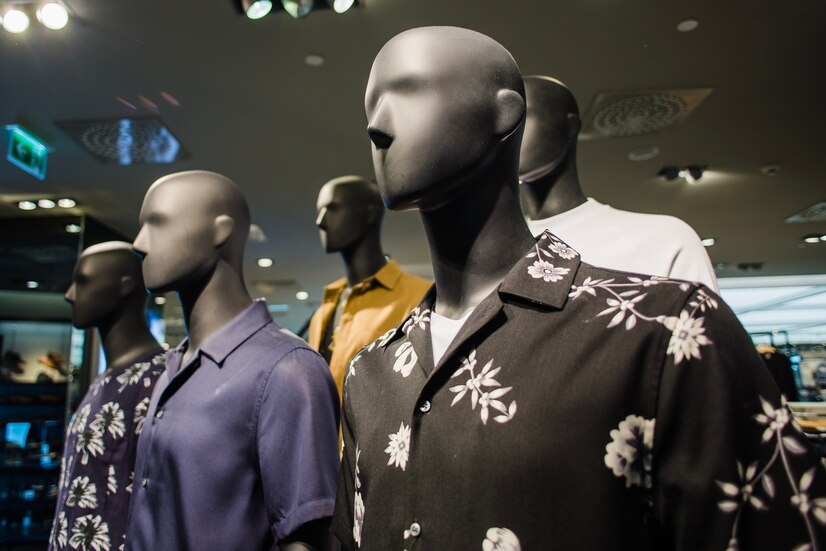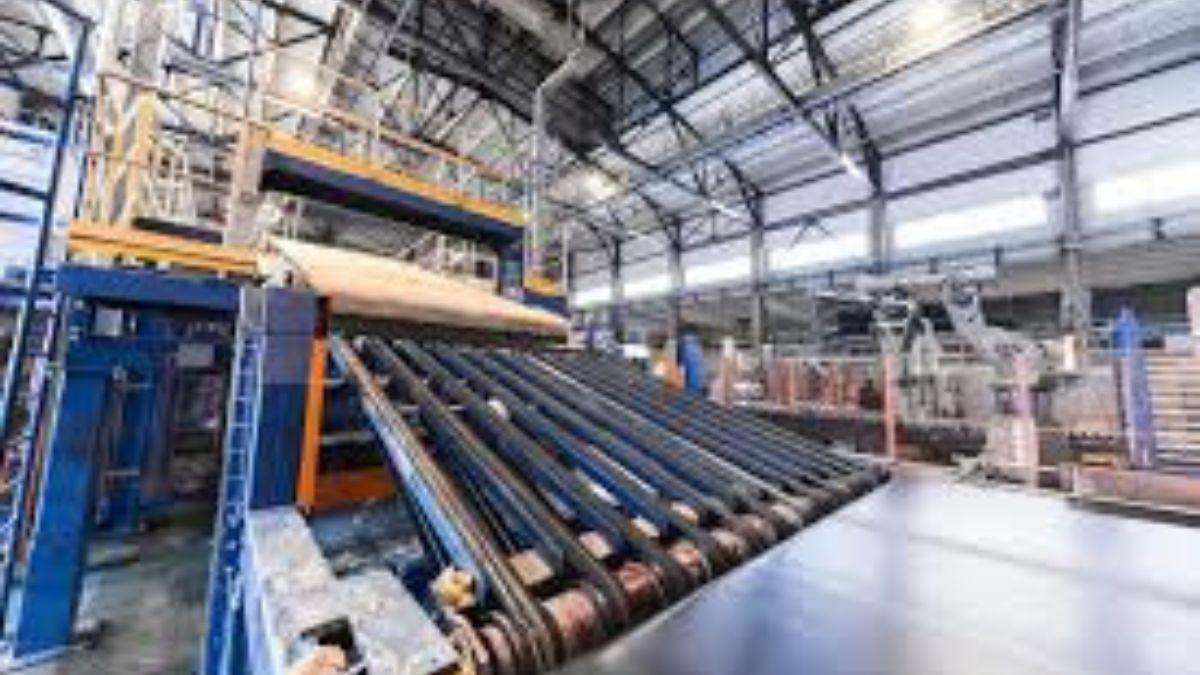FASHION
Sustainable Fashion: Redefining Style with a Green Heart

In the heart of the bustling fashion industry, a quiet revolution is stirring—a movement that’s not just about style but about sustainability. The world of fashion is increasingly taking a greener path, and it’s not just a fleeting trend. Sustainable fashion is here to redefine style with an eco-conscious heartbeat.
Understanding Sustainable Fashion
Sustainable fashion isn’t just a buzzword; it’s a commitment to creating a system that can support long-term ecological balance. It involves producing garments in ways that are mindful of the environment and socio-economic aspects. Imagine a world where your clothes not only make you look good but also do good. That’s the essence of sustainable fashion—fashion that respects both people and the planet.
The Rise of Ethical Consumerism
The shift towards sustainability in fashion is largely driven by the rise of ethical consumerism. Consumers today are more informed and conscientious. They care about where their clothes come from, how they are made, and the impact their purchase has on the world. This awareness is driving demand for fashion that minimizes its carbon footprint and champions fair labor practices.
Key Components of Sustainable Fashion
- Eco-Friendly Materials: Sustainable fashion often involves the use of eco-friendly materials such as organic cotton, hemp, and recycled fibers. These materials require less water, energy, and chemicals to produce, reducing the overall environmental impact.
- Ethical Production: It’s not just about what materials are used, but how they are sourced and produced. Ethical production ensures fair wages and safe working conditions for workers in the fashion supply chain.
- Waste Reduction: Innovative brands are finding ways to minimize waste through practices like zero-waste pattern making, recycling, and upcycling old garments into new designs.
- Longevity and Quality: Sustainable fashion emphasizes quality over quantity, encouraging consumers to buy less but choose better. Durable, timeless pieces over fast-fashion fads ensure longer garment lifecycles.
- Circular Fashion: The circular fashion model promotes designing out waste and pollution, keeping products and materials in use, and regenerating natural systems.
How Sustainable Fashion is Reshaping the Industry
Sustainable fashion is not just reshaping wardrobes; it’s transforming the entire fashion industry. Brands across the globe are adopting sustainable practices, from big luxury houses to indie startups.
Innovative Design Practices
Designers are increasingly incorporating sustainability into their creative process. This includes everything from using digital modeling to reduce fabric waste, to designing for disassembly so garments can be easily recycled at the end of their life.
Transparency and Accountability
Brands are being held to higher standards of transparency and accountability. Consumers and advocacy groups are demanding visibility into the supply chain, pushing companies to disclose their sourcing, manufacturing, and labor practices.
Collaboration and Community Building
The shift towards sustainable fashion is also fostering collaboration between brands, NGOs, and governments. Together, they are building communities focused on sharing best practices, driving policy change, and educating consumers on the benefits of sustainable fashion.
The Role of Technology in Sustainable Fashion
Technology is playing a crucial role in advancing sustainable fashion. From AI-driven design processes that optimize material usage to blockchain technology providing transparency in supply chains, tech innovations are paving the way for a new era in fashion.
AI and Data Analytics
AI and data analytics are helping brands predict trends, streamline inventory, and reduce waste. By understanding consumer preferences, brands can produce what is needed, when it’s needed, thus reducing excess production.
Virtual and Augmented Reality
Virtual and augmented reality are revolutionizing how consumers shop and experience fashion. Virtual try-ons and showrooms reduce the need for physical samples and travel, lowering the industry’s carbon footprint.
Blockchain Technology
Blockchain technology provides a secure, transparent way to track the entire lifecycle of a garment—from raw material sourcing to final sale. This level of transparency builds trust with consumers and ensures ethical practices throughout the supply chain.
How You Can Support Sustainable Fashion
Supporting sustainable fashion is not just about buying from sustainable brands; it’s about making informed choices and advocating for change.
Educate Yourself
Stay informed about the brands you support and their practices. Look for certifications like Fair Trade, GOTS (Global Organic Textile Standard), and OEKO-TEX that indicate a commitment to sustainability.
Make Thoughtful Purchases
Adopt a ‘buy less, choose well’ mentality. Invest in high-quality, versatile pieces that will stand the test of time rather than succumb to fast fashion temptations.
Care for Your Clothes
Extend the life of your garments by caring for them properly. Wash less, repair instead of discard, and recycle or donate clothes you no longer wear.
Spread the Word
Use your voice to advocate for sustainable fashion. Share your knowledge and passion with friends, family, and on social media. The more people demand sustainable options, the more the industry will have to deliver.
The Future of Sustainable Fashion
The future of fashion is undoubtedly green. With increasing consumer demand and technological advancements, sustainable fashion is poised to become the norm rather than the exception. Brands that fail to adapt may find themselves left behind as consumers continue to prioritize the planet and people over short-term profits.
Emerging Trends
Emerging trends suggest a move towards local, artisanal production, increased use of biodegradable materials, and further integration of technology to enhance sustainability.
A Call to Action
The sustainable fashion movement invites everyone to take part—from consumers to designers, manufacturers to policymakers. It’s a collective effort to redefine style with a conscience, ensuring that fashion becomes a force for good.
In conclusion, sustainable fashion is not just a trend; it’s a necessary evolution in an industry ripe for change. By choosing sustainable options, we can redefine style with a green heart, ensuring a brighter, more ethical future for fashion. Whether you’re a fashion enthusiast or a conscious consumer, your choices can make a difference. Join the movement, and together, let’s wear our values.
FASHION
Strip Hat Fashion Revolution Discover the Style Icon of Headwear

Fashion is an ever-evolving canvas that allows individuals to express themselves creatively. Among the many accessories that have made a splash in recent years, the strip hat has emerged as a versatile and trendy accessory that can elevate any outfit. Whether you’re a fashion enthusiast or someone looking to spruce up their wardrobe, the strip hat offers an exciting avenue for creativity and style. In this article, we’ll explore the world of strip hats, their origins, styling tips, and why they should be a staple in your closet. By the end, you’ll be equipped with the knowledge to rock this chic accessory with confidence.
The Rise of the Strip Hat
Strip hats are not just an accessory; they’re a fashion statement. With their unique design and vibrant colors, strip hats have captured the attention of fashion-forward individuals around the globe. But where did this trend originate? The strip hat has its roots in street fashion, where bold patterns and unconventional styles reign supreme. Originally popularized by urban artists and musicians, strip hats quickly made their way into mainstream fashion due to their eye-catching appeal. The combination of functionality and style makes them a must-have for those who want to stand out.
Understanding the Appeal
What sets strip hats apart from other forms of headwear is their ability to add a touch of personality to any look. These hats are often characterized by strips of contrasting colors or patterns, creating a playful and dynamic appearance. This visual intrigue makes them ideal for those who want to inject a bit of fun into their outfit without compromising on style. Strip hats have also gained popularity due to their suitability for various settings, from casual hangouts to more formal events. The versatility they offer is unmatched, making them a favorite accessory for many.
Styling Your Strip Hat
One of the greatest advantages of strip hats is their adaptability in terms of styling. Whether you’re going for a laid-back look or something more polished, a strip hat can be your go-to accessory. Pair it with a casual t-shirt and jeans for an effortlessly cool vibe, or match it with a tailored blazer for a more sophisticated appearance. The key is to choose colors that complement your outfit while letting the strip hat be the focal point. Don’t be afraid to experiment with different combinations to find what suits your personal style best.
Choosing the Right Strip Hat for You
With so many options available, finding the perfect strip hat can be overwhelming. The first step is to consider your personal style and the occasions you plan to wear it for. If you’re someone who loves bold statements, opt for a strip hat with vibrant colors and striking patterns. On the other hand, if you prefer a more understated look, there are plenty of options with subtle designs and neutral tones. Additionally, consider the material of the hat for comfort and durability. A well-chosen strip hat can become a staple in your wardrobe, enhancing a variety of outfits.
A Practical Accessory
Beyond their aesthetic appeal, strip hats offer practical benefits as well. They provide protection from the sun, making them an excellent choice for outdoor activities. The brim of the hat shields your face from harmful UV rays, helping prevent sunburn and premature aging. For those who love spending time at the beach or attending outdoor events, a strip hat is both a stylish and functional addition to your ensemble. This practicality makes them a favorite among people who value both fashion and function in their accessories.
Strip Hats for Different Seasons
A common misconception is that hats are just for summer. Strip hats, with their myriad of designs and materials, can be worn throughout the year. In winter, opt for a thicker fabric to keep warm while maintaining your stylish edge. Wool or felt strip hats are excellent choices for colder weather, providing both insulation and flair. During the warmer months, choose lightweight materials like cotton or straw to stay cool while protecting yourself from the sun. This adaptability ensures that strip hats remain relevant no matter the season.
Incorporating Strip Hats into Everyday Wear
For those new to the strip hat trend, incorporating it into everyday wear might seem daunting. The key is to start simple. Choose a strip hat that complements your everyday wardrobe and experiment with different outfits. Pair it with a classic white shirt or a patterned dress to see how it enhances your look. Over time, you’ll discover the endless possibilities that strip hats offer, allowing you to express your individuality through fashion. Remember, confidence is key when it comes to pulling off any accessory.
The Future of Strip Hats
The future looks bright for strip hats, as they continue to capture the imagination of fashion enthusiasts worldwide. Designers are constantly experimenting with new patterns, materials, and styles, ensuring that there’s always something fresh to explore. With sustainability becoming a major focus in fashion, many brands are now producing strip hats using eco-friendly materials and ethical manufacturing practices. This shift towards conscious fashion ensures that strip hats will remain a staple in the wardrobes of style-savvy individuals who care about the planet.
A Staple in Street Style
Street style has played a significant role in popularizing strip hats, with influencers and fashionistas alike incorporating them into their signature looks. The dynamic nature of street fashion allows for bold experimentation, and strip hats fit perfectly within this realm. Whether spotted on the bustling streets of New York or the vibrant markets of Tokyo, strip hats have become a symbol of individuality and creativity. The influence of street style ensures that strip hats continue to evolve, keeping them at the forefront of fashion trends.
Strip Hats in Popular Culture
Strip hats have also made notable appearances in popular culture, further cementing their status as a fashion staple. Celebrities and artists frequently don strip hats in music videos, movies, and public appearances, showcasing their versatility and appeal. This exposure has contributed to their widespread popularity, inspiring fans to incorporate strip hats into their own wardrobes. The presence of strip hats in media serves as a testament to their enduring charm and ability to capture the essence of contemporary fashion.
Conclusion
In conclusion, the strip hat is more than just an accessory; it’s a celebration of individuality and style. Its rise in popularity is a testament to its ability to transcend trends and remain a timeless piece. By understanding its appeal, experimenting with different styles, and choosing the right hat for you, you can make strip hats a key component of your fashion arsenal. Whether you’re strolling through city streets or attending a social gathering, a strip hat can elevate your look and leave a lasting impression.
As you explore the world of strip hats, remember that fashion is all about expressing yourself and having fun. Don’t be afraid to step out of your comfort zone and try something new. The possibilities are endless, and with the right strip hat, you can make a statement that is uniquely yours.
For more inspiration and tips on incorporating strip hats into your wardrobe, be sure to check out our resources page and stay updated with the latest fashion trends.
FASHION
Kimbsxo: Revolutionizing Fashion with Authenticity and Innovation

In a world flooded with fleeting fashion trends, one brand stands out by redefining what it means to be stylish—Kimbsxo. With a seamless blend of authenticity and innovation, Kimbsxo is capturing the hearts of fashion enthusiasts across the globe. This post unveils how Kimbsxo is revolutionizing the fashion industry and why it matters to you.
The Rise of Kimbsxo in the Fashion World
Kimbsxo is not just another name in the fashion industry. It has rapidly ascended to become a beacon of authenticity and creativity. Founded by visionaries who believe in breaking the fashion mold, Kimbsxo offers something unique—a commitment to genuine style that resonates with its audience. Unlike brands that chase trends, Kimbsxo sets them, creating a loyal following eager to see what’s next.
Harnessing innovative design with a touch of nostalgia, Kimbsxo appeals to those craving individuality wrapped in a contemporary package. This blend of old and new has positioned Kimbsxo as a pioneer, challenging the status quo and inspiring others to follow suit. It’s not just about clothes; it’s about a movement towards authenticity.
Why does this matter to you? If you’re someone who values originality and quality over mere labels, Kimbsxo is a brand that speaks your language. It offers more than just attire—it offers a lifestyle choice that celebrates who you are. Here is a look at how Kimbsxo is changing the rules and why you should be part of this exciting evolution.
Authenticity in Every Thread
One of the core pillars of Kimbsxo is authenticity. In an age where fast fashion dominates, Kimbsxo takes a different route by focusing on genuine, high-quality pieces that tell a story. Each collection is crafted with care, ensuring that every item reflects a commitment to authenticity.
The dedication to genuine fashion is evident in the materials Kimbsxo selects. From ethically sourced fabrics to sustainable production processes, every step echoes the brand’s ethos. This commitment ensures that when you wear Kimbsxo, you’re wearing more than a fashion statement—you’re supporting a movement that values integrity and craftsmanship.
But what does this mean for you? It means when you choose Kimbsxo, you’re choosing sustainability. You’re opting for pieces that last, ones that remain stylish season after season. You’re supporting a brand that cares about the planet as much as it cares about your style.
Innovation Meets Tradition
Innovation is another key component that sets Kimbsxo apart. By marrying cutting-edge technology with traditional craftsmanship, Kimbsxo delivers products that are both futuristic and timeless. This juxtaposition allows for a refreshing take on fashion, one that keeps the brand at the forefront of the industry.
Kimbsxo’s designs often feature unexpected elements, merging classic silhouettes with modern twists. This approach not only captures attention but also keeps customers intrigued. It’s a brand that’s always evolving, always pushing boundaries, and always looking for the next big thing.
For you, this means access to unique pieces that stand out from the crowd. It means you can experiment with style without sacrificing quality or authenticity. With Kimbsxo, innovation isn’t just a buzzword; it’s a promise of something extraordinary.
Crafting a Unique Fashion Identity
Creating a personal fashion identity can be daunting, but Kimbsxo makes it accessible. By offering versatile pieces that can be mixed and matched, Kimbsxo empowers individuals to craft their unique style narratives. With each collection, the brand provides tools for self-expression.
Kimbsxo understands that fashion is personal. It’s not about fitting in but standing out. The brand’s diverse range includes everything from bold prints to subtle classics, ensuring there’s something for everyone. This inclusivity is central to Kimbsxo’s ethos, making it a favorite among those who refuse to be boxed in.
For those looking to carve out a niche in the fashion world, Kimbsxo provides the perfect canvas. By choosing Kimbsxo, you’re not just following trends—you’re creating them. You’re telling your story, one outfit at a time.
Community and Connection
Kimbsxo isn’t just a brand; it’s a community. With a strong emphasis on building connections, Kimbsxo fosters a sense of belonging among its customers. Through engaging events and collaborative projects, the brand brings together fashion enthusiasts who share a passion for authenticity and innovation.
The sense of community extends beyond physical events. Kimbsxo’s online presence is vibrant and interactive, encouraging dialogue and creativity. This connection is vital, especially in today’s digital age, where authentic engagement often feels scarce.
By aligning with Kimbsxo, you’re becoming part of a larger narrative. You’re joining a community that values real connections and shared experiences. This network of like-minded individuals offers inspiration and support, reinforcing the idea that fashion is more meaningful when it’s shared.
Sustainability at the Core
In recent years, sustainability has become a crucial aspect of the fashion industry. Kimbsxo is at the forefront of this movement, prioritizing eco-friendly practices in all aspects of production. From reducing waste to using sustainable materials, Kimbsxo is committed to minimizing its environmental footprint.
This dedication to sustainability is not just a trend for Kimbsxo; it’s a core value. The brand continuously seeks innovative ways to improve its practices, ensuring that it remains a leader in the sustainable fashion space. By doing so, Kimbsxo appeals to conscious consumers who value ethical considerations alongside style.
Choosing Kimbsxo means supporting a brand that respects the planet. It means investing in pieces that are not only beautiful but also responsible. Kimbsxo proves that fashion can be sustainable, stylish, and authentic all at once.
Personalized Experience
In an era where personalization is key, Kimbsx’o excels at offering tailored experiences to its customers. The brand understands that every individual is unique, and their fashion choices should reflect that. By providing personalized styling advice and custom options, Kimbsxo ensures a bespoke experience for every customer.
The commitment to personalization goes beyond clothes. Kimbsxo’s customer service is exemplary, with a focus on understanding and meeting the needs of each individual. This attention to detail creates a seamless shopping experience that is memorable and satisfying.
For you, this means a fashion brand that listens and responds. It means having access to experts who can help you refine your style, ensuring you’re always confident in your choices. With Kimbsx’o , personalization is not an added bonus—it’s integral to the brand’s identity.
Celebrating Diversity
Diversity is a strength at Kimbsx’o , reflected in its collections and campaigns. The brand celebrates individuality and embraces differences, ensuring that its offerings are inclusive and accessible to all. This commitment to diversity is evident in the variety of styles, sizes, and designs available.
Kimbsxo’s inclusive approach resonates with a wide audience, making it a beloved brand across different demographics. By showcasing diverse voices and stories, Kimbsxo reinforces the message that fashion is for everyone, and every story deserves to be told.
For you, choosing Kimbsx’o is choosing a brand that represents the real world. It’s about finding pieces that resonate with who you are and what you believe in. Kimbsxo’s dedication to diversity ensures that everyone feels seen and celebrated.
The Future of Fashion with Kimbsxo
Looking ahead, Kimbsxo is poised to continue its trajectory as a leader in the fashion industry. With plans to expand its offerings and explore new markets, the brand remains committed to innovation and authenticity. This forward-thinking approach ensures that Kimbsxo will continue to inspire and influence the fashion world.
As Kimbsxo grows, its core values will remain unchanged. The brand’s dedication to authenticity, community, and sustainability will continue to guide its path, ensuring that it remains a trusted name in the fashion industry.
For those invested in the future of fashion, Kimbsx’o offers a glimpse of what’s possible. It’s a brand that proves style can be both forward-looking and grounded in integrity. By aligning with Kimbsx’o , you’re supporting a vision that prioritizes the true essence of fashion.
How Kimbsxo Empowers You
At the heart of Kimbsxo’s mission is empowerment. The brand believes in empowering individuals to express themselves through fashion without compromising on authenticity or quality. By offering versatile and innovative pieces, Kimbsx’o equips its customers with the tools they need to showcase their true selves.
Empowerment at Kimbsx’o isn’t just about clothes—it’s about fostering confidence and inspiring creativity. The brand’s commitment to empowerment extends beyond its products, with initiatives and collaborations that uplift and support diverse voices in the fashion community.
Choosing Kimbsx’o means choosing empowerment. It means aligning with a brand that believes in your potential and supports your fashion journey. With Kimbsx’o , empowerment is woven into every thread, ensuring you always feel your best.
Conclusion
Kimbsxo is more than just a fashion brand—it’s a movement towards authenticity, innovation, and empowerment. By redefining the fashion landscape, Kimbsxo has captured the hearts of countless individuals seeking genuine expression through style. From its commitment to sustainability to its celebration of diversity, Kimbsxo represents the future of fashion.
For those ready to join the revolution, Kimbsx’o offers an invitation to explore, create, and connect. It’s a chance to be part of a community that values true style and supports each individual’s unique fashion narrative.
Explore Kimbsx’o today and discover how fashion can be a powerful tool for self-expression and positive change. Whether you’re a seasoned fashion enthusiast or just beginning your style journey, Kimbsx’o welcomes you to a world of endless possibilities.
-

 TOPIC6 months ago
TOPIC6 months agoDiscovering Joe’s Carts: A Adventure on Wheels
-

 TECHNOLOGY5 months ago
TECHNOLOGY5 months agoNavigate Mojini V3 Login Like a Pro
-

 BLOG8 months ago
BLOG8 months agoMyWape: A Deep Dive into the Emerging Video-Sharing Platform
-

 BLOG9 months ago
BLOG9 months agollm 申請 statement of purpose
-

 BLOG7 months ago
BLOG7 months agoWhy Aoleonuithietke.com Is the Go-To Resource for Creative Inspiration
-

 ENTERTAINMENT5 months ago
ENTERTAINMENT5 months agoBehind the Screen Magic of Web Series Uncut
-

 TECHNOLOGY6 months ago
TECHNOLOGY6 months agoTransforming Manufacturing with Precision Winding Machines
-

 BIOGRAPHY7 months ago
BIOGRAPHY7 months agoip-adapter_pulid_sdxl_fp16.safetensors
